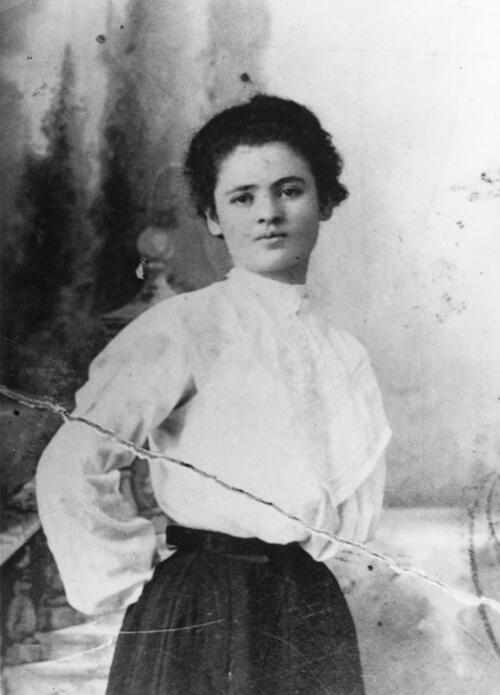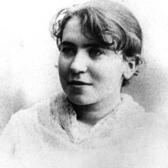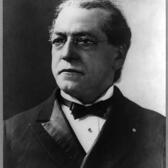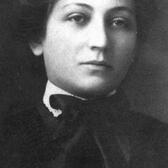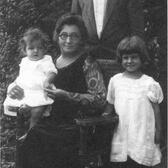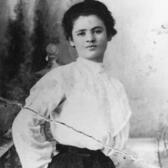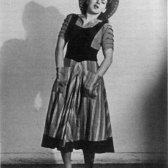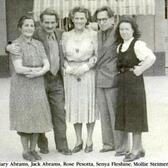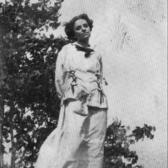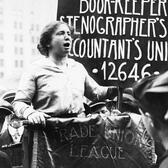Judith Sandman
Judy is a middle school teacher at two synagogue schools. Her winning lesson plan called “What Will It Cost Me To Work For You?” connects Jewish stories from the Labor Movement to contemporary labor issues in Pakistan and Bangladesh.
What Will It Cost Me to Work for You?
Through learning about Judaism’s views on labor, as well as about Jewish women in the labor movement, students will explore realistic responses to unfair labor conditions in the US and overseas today.
Overview
Enduring Understandings
- When making purchases, we have an obligation to inform ourselves about company's’ labor practices.
- Jewish women played a key role in the labor movement.
- While labor laws in some countries have improved, there is still work to be done to ensure workers’ safety in factories and other potentially dangerous work environments
Essential Questions
- What does Jewish text have to say about labor?
- Why are labor laws important?
- Are we obligated to shop based on a company’s labor practices and policies?
- What can we do to encourage companies to place an emphasis on workers’ safety?
Materials Required
- Index cards
- Poster board
- Pens and markers
- Costumes including: long skirts, hats, white shirt
Introductory Essay
Judith Sandman
At the beginning of the 20th century, there was a significant rise in Jewish immigration to the United States from Europe. Many Jews fled Europe in order to seek greater economic opportunity, escape pogroms, and to escape restrictions on education, residence, and occupation in a time when many Jews had been displaced by industrialization. New York was an appealing destination for many immigrants because of access to employment and jobs with upward mobility, housing, food in abundance, free education, freedom of thought and religious life, and the right to vote (for men only). Between 1880 and 1920, twenty three million immigrants entered the United States, two and a half million of whom were Eastern European Jews. Eighty five percent of Eastern European Jewish immigrants immigrated to New York, and seventy five percent settled in the Upper East Side. These immigrants lived in tenements, which were large buildings with small units that would each house anywhere from three to twelve people. Some families were still forced to take in boarders in order to support themselves. Space was so limited, some people had to sleep in shifts. Interior rooms did not have windows, and therefore completely lacked natural light and air.
Between 1840 and 1850, one-third of Jewish wage earners in New York were peddlers. At first, there was little ready-made clothing, so peddlers peddled secondhand clothing, much of which was supplied by Jewish New York suppliers. As industrialization increased, clothing manufacturing in New York also increased 600 percent. New York’s growth in manufacturing was contributed to by its proximity to New England textile factories and the delivery of European textiles to the port of New York. Close to half of all immigrants sewed clothed in hundreds of small-scale sweatshops in one of the country’s most important industries. Factory owners were attracted to New York for many reasons, such as cheap and plentiful labor, the growing consumer and retail market, and access to the financial sector and banks. Many Jewish immigrants, especially women, were employed in these factories. Between 1914 and 1915, thirty seven percent of working papers in New York were issued to Jewish teenagers aged fourteen or above. These factories were rife with unfair labor practices: not being allowed to speak, being fined for speaking, paying rent for work materials, crowded working conditions, losing half a day’s pay for being a minute late, low pay, no overtime, having to report to work even when no paid work was available, dirty bathrooms, lack of time to use the bathroom, little opportunity for women to advance, women being paid half as much as men, being beaten for attempting to unionize, being cheated out of pay with no way to retaliate, and harassment of women workers by men. In November of 1909, there was a strike to protest working conditions in garment factories. The strike lasted for eleven weeks, and though the workers did not achieve many of their goals, they did make some progress on the issues of pay and worker safety. The strike brought to the public’s attention the terrible conditions under which these women worked, and the strike strengthened the struggling International Ladies Garment Workers Union.
Though the events of the Triangle Shirtwaist Factory Fire and the activism work of Jewish women and the labor movement as a whole led to stronger laws protecting workers and more stringent safety regulations, there is still much work to be done to protect the health and safety of factory workers today. On Wednesday April 23, 2013, more than 650 workers in a factory located in Savar, Bangladesh were killed when the factory floor collapsed. The day before the collapse, workers noticed big cracks in the wall. The four upper floors of the building, it would later be shown, had been added illegally, and the building’s foundation was substandard. When the cracks were discovered, the stores and bank on the lower floors of the building were closed immediately. But the owners of the garment factories on the upper floors ordered their employees to come to work on Wednesday. Among the stores for which those factories were making clothes were Walmart and Benetton.
The Torah provides guidance on how workers should be treated, but rabbis and Jewish leaders today are still concerned with the same subject. Using traditional Jewish texts as a starting point, they are formulating new suggestions and rulings about the obligations of Jewish employers and employees. The Conservative movement passed a teshuvah—a written legal text—by Rabbi Jill Jacobs requiring Jewish employers to treat workers with dignity and respect, to pay them fairly, to provide safe working conditions, and so on.
Introduction
- Explain. In September 2012, a fire killed 300 workers at a textile factory in Karachi, Pakistan; employees were prevented from escaping by locked factory doors. In November 2012, more than 100 workers were killed when fire swept through a garment factory in Dhaka, Bangladesh. Finally, in New York City, 146 people were killed, many of them by jumping out of ninth-story windows, when fire swept through the clothing factory in which they worked.
- Ask. What is the difference between the factory fires in South Asia in 2012 and the fire in New York City?
- Explain. The fires in South Asia occurred about a hundred years before the fire in New York. The fire in New York took place at the Triangle Shirtwaist Company on Saturday, March 25, 1911.
Explain. Explain to the students the circumstance of the fire at the Triangle Shirtwaist Company
Part One
- Ask students to think back to the time of the Torah.
- Discuss. Were there factories back then? Either way, the Torah has a great deal to say about workers. Why? What?
- Print source sheets with Tanakh texts related to labor and give one to each student. Ask students to choose one or two of the texts that are particularly meaningful to them.
Discuss: Why did the student choose that text? What is the Tanakh trying to teach us?
Part Two
- Explain. Explain why Jews immigrated from Eastern Europe to the United States and the circumstances that made New York an appealing destination for immigrants (see “Teacher Resources” below for information on Jewish immigration and New York)
- Explain. Describe to students what life was like living on the Lower East Side for Jewish immigrants in the early 1900s
- Read the excerpt of an article where Clara Lemlich discusses young working girls.
- Discuss: What is Clara Lemlich trying to convey about everyday life?
- Assignment. Write a letter to a friend or relative back in eastern Europe about the advantages and/or disadvantages of life on the Lower East Side. Would you encourage them to immigrate or discourage them from doing so?
Part Three
- Read an excerpt from Pauline Newman’s unpublished memoir, describing the hardships of life as a garment worker.
- As you read, ask students to keep a running list of unfair labor practices
Part Four
- Explain. In November 1909 more than twenty thousand garment workers, two-thirds of them young Jewish women, participated in the largest strike that had ever taken place in the United States.
- Discuss: What were some of the issues we had previously discussed that workers were protesting against?
- Show students a photo of Clara Lemlich
- Discuss. What do you think of when you see this photograph?
- Distribute profiles of Jewish labor movement leaders
Assignment. Ask students to pretend they are speaking during the 1909 strike in the voice of one of the people whose profile they’ve read or in the voice of a character they create. They should state what they are fighting for, what they would say to convince other workers to strike with them, or what they could say to convince the public to support them. Each student should design a protest poster to carry and create a chant for the rally. Students can then hold a rally carrying their posters, chanting as they march, and making speeches.
Part FIve
- Explain. Explain the events of the fire at the Triangle Shirtwaist Company
- Ask a student to read the speech that Rose Schneiderman delivered to protest the Triangle Shirtwaist Factory Fire
Explain. Describe the changes in laws surrounding factory safety conditions after the fire
Part Six
- Explain. Explain to students the circumstances of the deaths of 650 workers when a factory floor in Bangladesh collapsed.
- Discuss. Who is to blame for the conditions in these factories?
- If US companies or stores subcontract the work, does that exonerate them?
- Do US workers have to worry about building collapses and fires like overseas workers? How about illegal immigrant workers in the United States?
- How do unions in the United States today compare to unions a century ago?
- Explain. Explain how the Torah discusses the issue of workers’ rights and safety
- Read an Excerpt from the Living Wage Teshuvah” by Rabbi Jill Jacobs
- Assignment. Ask students to formulate five rules for employers and five rules for employees, sharing their answers and coming up with a comprehensive list. Then, in a roundtable discussion, encourage students to brainstorm ways they can help improve conditions for workers today. Ideas might include:
- E-mailing clothing manufacturers to find out where their clothing is made.
- Questioning retailers about safeguards they have in place to ensure safe working conditions for overseas factory workers.
- Organizing a petition to improve factory conditions.
- Organizing a protest against manufacturers or retailers who do not inspect the factories in which their goods are made.
- Urging manufacturers and retailers to pay employees a living wage.
- Urging manufacturers to provide food, housing, and schooling for workers and their children.
- Refusing to buy clothing from companies who do not care about their workers.
- Discouraging their friends from buying clothing from companies that do not protect their workers.
Clara Lemlich Article
Excerpt on hats from Clara Lemlich article about 1909 strike
"Sometimes a girl has a new hat. It is never much to look at because it never costs more than fifty cents, but it's pretty sure to be spoiled after it's been at the shop. There are no dressing rooms for the girls in the shops, no place to hang a hat where it will not be spoiled by the end of the day. We’re human, all of us girls, and we’re young. We like new hats as well as any other young women. Why shouldn’t we? And if one of us gets a new one, even if it hasn’t cost more than 50 cents, that means that we have gone for weeks on two-cent lunches—dry cakes and nothing else."
Pauline Newman unpublished memoir
Excerpt from Pauline Newman’s unpublished memoir, in which she describes the monotony and hardships of garment work.
… The job I found next was to sew buttons on shirtwaists. The shop was located in an old walk-up building on Jackson Street, near the East River and facing what was then called Jackson Street park. From where I sat I could see children playing there, hear them singing “all around the mulberry bush.” As I mentioned before, it was summer and the air in the shop [was] stuffy and hot. Often I longed to join the youngsters in the park and to breathe the cool fresh air. After all, I was not much older than they were! At the end of my first day’s work I was handed a slip of paper showing that I had earned thirty-five cents! I considered myself rich!...
One day a relative of mine who was employed by the now infamous Triangle Shirt Waist co., the largest manufacturers of shirt waists in New York City, got me a job with that firm. The day I left the Jackson Street shop the foreman told me that I was very lucky to have gotten a job with that concern because there is work all year.
As I said before, the job was not strenuous. It was tedious. Since our day began early we were often hungry for sleep. I remember a song we used to sing which began with “I would rather sleep than eat.” This song was very popular at that time. But there were conditions of work which in our ignorance we so patiently tolerated such as the deductions from our meager wages if and when you were five minutes late – so often due to transportation delays; there was the constant watching you, lest you pause for a moment from your work; (rubber heels had just come into use and you rarely heard the foreman or the employer sneak up behind you, watching.) You were watched when you went to the lavatory and if in the opinion of the forelady you stayed a minute or two longer than she thought you should have you were threatened with being fired; there was the searching of your purse or any package you happen to have lest you may have taken a bit of lace or thread. The deductions for being late was stricktly [sic] enforced because deductions even for a few minutes from several hundred people must have meant quite a sum of money. And since it was money the Triangle Waist Co. employers were after this was an easy way to get it. That these deductions meant less food for the worker’s children bothered the employers not at all. If they had a conscience it apparently did not function in that direction. As I look back to those years of actual slavery I am quite certain that the conditions under which we worked and which existed in the factory of the Triangle Waist Co. were the acme of exploitation perpetrated by humans upon defenceless [sic] men, women and children – a sort of punishment for being poor and docile…
Despite these inhuman working conditions the workers – including myself – continued to work for this firm. What good would it do to change jobs since similar conditions existed in all garment factories of that era? There were other reasons why we did not change jobs – call them psychological, if you will. One gets used to a place even if it is only a work shop. One gets to know the people you work with. You are no longer a stranger and alone. You have a feeling of belonging which helps to make life in a factory a bit easier to endure. Very often friendships are formed and a common understanding established. These, among other factors made us stay put, as it were…
When I got home I sat down and wrote:
“In despair I ask – ‘dear God will it ever be different?’ And on my way home from work I see again those lonely men and women with hopeless faces, tired eyes; harassed by want and worry – I again ask ‘will it ever be different?’”
Photo of Clara Lemlich
Rose Schneiderman's Speech
Rose Schneiderman's April 2, 1911 Speech
I would be a traitor to these poor burned bodies if I came here to talk good fellowship. We have tried you good people of the public and we have found you wanting. The old Inquisition had its rack and its thumbscrews and its instruments of torture with iron teeth. We know what these things are today; the iron teeth are our necessities, the thumbscrews are the high powered and swift machinery close to which we must work, and the rack is here in the firetrap structures that will destroy us the minute they catch on fire.
This is not the first time girls have been burned alive in the city. Every week I must learn of the untimely death of one of my sister workers. Every year thousands of us are maimed. The life of men and women is so cheap and property is so sacred. There are so many of us for one job it matters little if 146 of us are burned to death.
We have tried you citizens; we are trying you now, and you have a couple of dollars for the sorrowing mothers, brothers and sisters by way of a charity gift. But every time the workers come out in the only way they know to protest against conditions which are unbearable the strong hand of the law is allowed to press down heavily upon us.
Public officials have only words of warning to us—warning that we must be intensely peaceable, and they have the workhouse just back of all their warnings. The strong hand of the law beats us back, when we rise, into the conditions that make life unbearable.
I can't talk fellowship to you who are gathered here. Too much blood has been spilled. I know from my experience it is up to the working people to save themselves. The only way they can save themselves is by a strong working-class movement.
Speech by Rose Schneiderman at Metropolitan Opera House meeting to protest the Triangle Shirtwaist Factory fire April 2, 1911. From: Leon Stein, ed., Out of the Sweatshop: The Struggle for Industrial Democracy (New York: Quadrangle/New Times Book Company, 1977), pp. 196-197. First published in The Survey, April 8, 1911.
Living Wage Teshuvah
Excerpt from the Living Wage Teshuvah
2) Jewish employers are obligated to treat their workers with dignity and respect. This obligation should include, but should not be limited to, prohibitions against publicly yelling at, mocking, or otherwise embarrassing workers; forbidding employees from speaking their native languages at work; banning all bathroom breaks; changing work hours or adding shifts without advance notice; or making improper sexual comments or advances toward workers.
3) Jewish employers must pay their workers on time, according to an agreed-upon schedule, and may not pay workers with bad checks. Employers must pay workers for the full time worked, including mandatory preparation and clean-up hours. Employers who hire workers through a contractor should make every effort to ensure that these workers are being paid on time.
4) Jewish employers may not knowingly put their employees’ lives at risk by failing to provide appropriate safety equipment and training, or by knowingly forcing workers to work under dangerous conditions.
5) Jewish employers should strive to pay workers a “living wage”… When deciding among the options available, employers should not select a wage level that, while technically considered a living wage (according to a local ordinance, for example), is so low that employers know that workers will certainly need to take on additional jobs, and/or to endanger their health by working an excessive number of hours.
6) In most cases, unions offer the most effective means of collective bargaining and of ensuring that workers are treated with dignity and paid sufficiently. Jewish employers should allow their employees to make their own independent decisions about whether to unionize, and may not interfere in any way with organizing drives by firing or otherwise punishing involved workers, by refusing workers the option for "card check" elections, or by otherwise threatening workers who wish to unionize. When hiring low-wage workers or engaging contractors who supply low-wage workers, Jewish employers should strive to hire unionized workers when possible.
7) The principle of dina d'malkhuta dina obligates Jewish employers to comply with federal labor laws, even when these laws are inconsistently enforced.
8) Jewish employees are obligated to work at full capacity during their work hours, and not to "steal time" from their employers. Jewish union leaders should similarly strive to ensure that workers uphold the halakhic obligations of employees to employers. The ideal worker-employer relationship should be one of trusted partnership, in which each party looks out for the well-being of the other, and in which the two parties consider themselves to be working together for the perfection of the divine world.
Full text is now available online on the Rabbinical Assembly Website
Biographies of Jewish Labor Leaders
These biographies introduce unsung Jewish heroes and leaders of the Labor Movement.
Teacher Resources
- Information on the International Ladies Garment Workers Union
- Information on Clara Lemlich
- Information on the Uprising of 20,000
- Information Triangle Shirtwaist Company Fire


